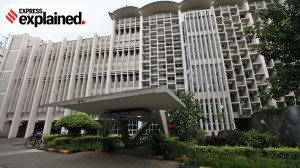Navigating the maze called urban governance
A city is a complex web of several systems and sub systems. Often,they are not managed properly,and that is why urban living becomes a big challenge. Good urban governance and management is the key to better life in cities
Who is supposed to manage the city? In whom is vested the responsibility,power and financial muscle to undertake the tasks that keep the city going? These are important questions for which we do not have straight answers in India.
The Indian urban governance model has been constructed on the Victorian system of municipalities. The long British rule in India led to the setting up of urban local bodies in various parts of the country. However,right from the beginning,there has always been a lack of clarity on their role,functioning and financing. At times,these organisations were seen as organs of state administration and at times,they were visualised as nurseries of democracy and politics. The existence of the third tier of local government,therefore,was always hazy and nebulous.
Firstly,the lack of clarity on the role of municipal bodies has led to their supersession by the state governments in many instances. Secondly,the establishment of parastatal organisations for specific functions has led to an erosion of functional domain. Functions such as water supply are distributed between the irrigation department,water supply and sewerage board and the municipality. Further,the creation of town planning departments has taken away this function from the municipal bodies. Thirdly,the weakening of the finances of municipal bodies on account of improper local tax levies and collection systems have led to a situation where these bodies could not provide the desired level of services. Fourthly,a weak executive system has also contributed to inefficiencies in management of day to day activities.
The erosion of functional domain,extensive state government control,poor financial health,along with a host of other associated factors,have contributed to the decline of urban local government over the years.
Two Developments
Two developments have,however,attempted to once again rechart the course of municipal governance; the 74th Constitutional Amendment Act (CAA) and the Jawaharlal Nehru National Urban Renewal Mission (JNNURM). While the CAA envisaged sweeping changes and there was a popular perception that many things would change,the national mission attempted many projects on the ground.
Under the CAA,urban local bodies were given constitutional status,a statement of the functions of the local bodies was made,provisions were also made for devolution of funds from central and state revenues and reservations were introduced for women and backward classes. It was widely believed that with this,many things would change. However,despite the completion of nearly two decades,it has still not brought about the changes that were originally envisaged. The reasons for this have been several.
Firstly,the provisions of the CAA itself have been inadequate and recommendatory rather than prescriptive,leading to lack of direction. Secondly,it is also understood that state governments are not very keen on sharing powers with the local bodies as their control would diminish. As a result,many functions have not been adequately devolved to the local bodies and continue with the state governments. Out of the 18 functions which were envisaged to be devolved to the local bodies,many states have yet to devolve as many as a dozen. Thirdly,the constitution of district planning committees and metropolitan planning committees for multi-municipal urban agglomerations has also not happened adequately with many states still to comply. Fourthly,the formation of ward committees and their rules of operation also leave many gaps. The varied implementation of the CAA has led to inadequacies in the municipal bodies.
Further,the enactment of a public disclosure law and community participation law has also not been very encouraging in most states. In addition,the poor implementation of steps to improve accounting reforms,property tax reforms also leave the municipal bodies more or less in the same inertia. Even where these reforms and changes have been implemented,they have been more in letter than in spirit.
Not In Mission Mode
The case of the JNNURM has been no different. Here too,the premise has been that cities need large amount of funds for urban renewal and with the infusion of capital,many problems could be sorted out. It has,however,been felt that capacities,or lack of them,rather than capital,is a more pressing issue. More often than not,municipalities do not attract the best talent and therefore lack awareness,perception and skill to undertake the tasks needed. As a result,projects are not prepared in an exhaustive manner and often,the implementation leaves too many gaps leading to the mandated reforms not being achieved.
Citizens attitude too,is marked by apathy. What the tax payer wants at the end of the day is a good level of services which can make his life smooth,if not comfortable. There is little participation by the people in local governance issues. There is no knowledge or use of modern management methods to handle complex tasks of street cleansing,solid waste management,drinking water supply,etc. There is ad hoc task fire fighting rather than a planned strategy for city maintenance.
The multiplicity of organisations make the situation incomprehensible to begin with. Secondly,these organisations lack trained urban managers. Often,the tenure of both political representative and the administrator alike is limited and in many cases,never known; it could range from a few months to a few years. Thirdly,each organisation has its own agenda,rather each head of the organisation has a different agenda. Therefore,with a change in the person,the direction of work in the organisation changes. What the predecessor does is undone by the successor. Fourthly,as a result of all this,there is nothing called a comprehensive approach or a strategy as a whole; one is blissfully ignorant of what the other is doing and working at cross purposes becomes an innocent outcome.
That is why,perhaps,some roads are never relaid,some others are laid again and again,and still some others are dug up soon as they are laid,apparently to undertake some repair which could have been easily done before!
There may not be an easy and ready answer to remedy this overnight. The CAA and the JNNURM were two steps to usher in change for the better. Unfortunately,both these have been inadequate in design,not fully appropriate in content and the people who are supposed to implement them,lacking in capacities to do so.
Cities contribute greatly to development of the nation in more ways than one. This significance of urban development is often lost sight of and age old models of municipal governance are being tinkered with.
The need of the hour is for a complete overhaul of the systems in place and creation of new models of governance where professional urban managers,not politicians,are given place of prominence in decision making. Unless such a radical step is taken,little improvement in urban governance can be expected.
The author is Professor,SPA New Delhi




- 01
- 02
- 03
- 04
- 05



























